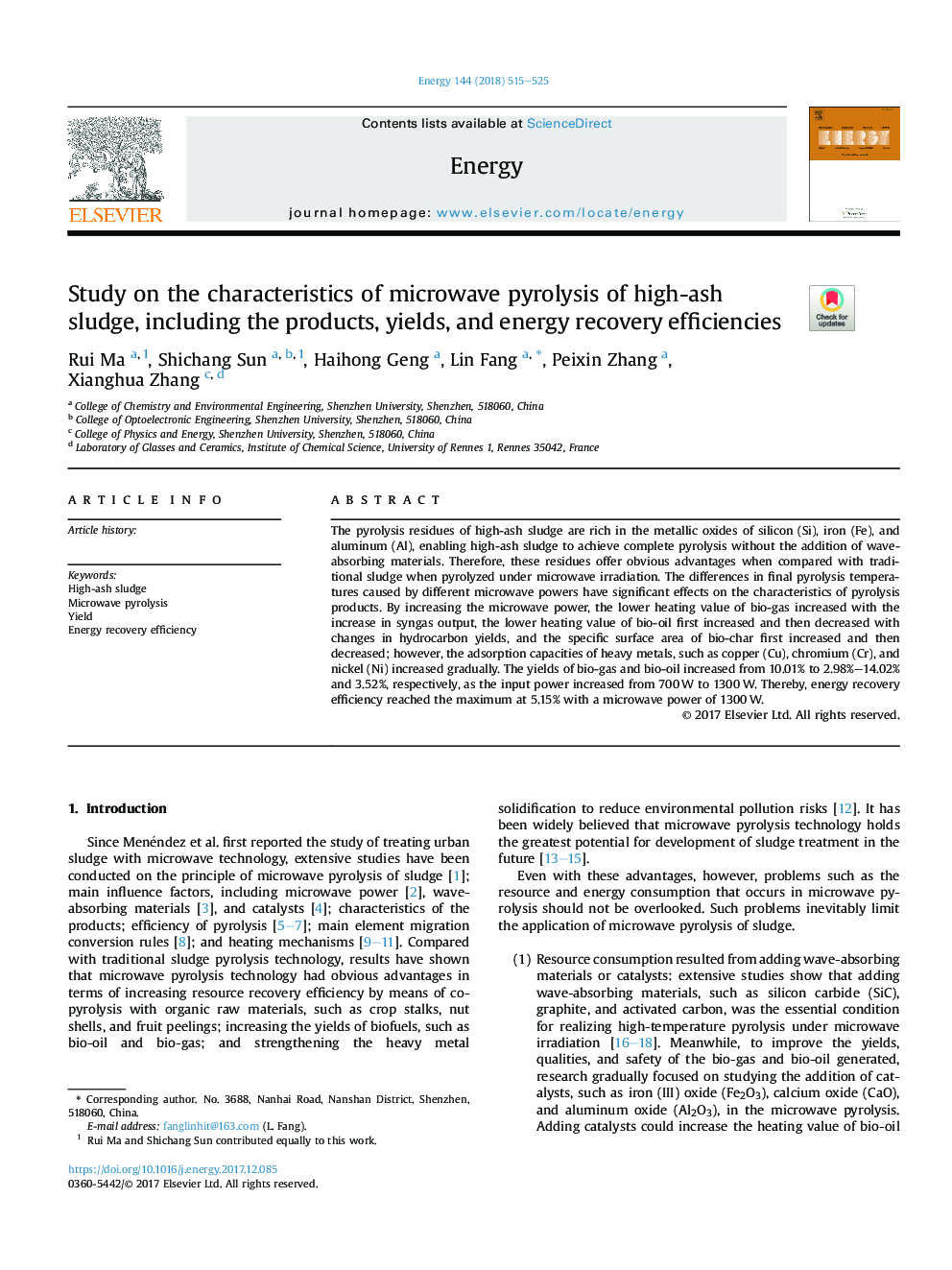| Article ID | Journal | Published Year | Pages | File Type |
|---|---|---|---|---|
| 8072339 | Energy | 2018 | 11 Pages |
Abstract
The pyrolysis residues of high-ash sludge are rich in the metallic oxides of silicon (Si), iron (Fe), and aluminum (Al), enabling high-ash sludge to achieve complete pyrolysis without the addition of wave-absorbing materials. Therefore, these residues offer obvious advantages when compared with traditional sludge when pyrolyzed under microwave irradiation. The differences in final pyrolysis temperatures caused by different microwave powers have significant effects on the characteristics of pyrolysis products. By increasing the microwave power, the lower heating value of bio-gas increased with the increase in syngas output, the lower heating value of bio-oil first increased and then decreased with changes in hydrocarbon yields, and the specific surface area of bio-char first increased and then decreased; however, the adsorption capacities of heavy metals, such as copper (Cu), chromium (Cr), and nickel (Ni) increased gradually. The yields of bio-gas and bio-oil increased from 10.01% to 2.98%-14.02% and 3.52%, respectively, as the input power increased from 700â¯W to 1300â¯W. Thereby, energy recovery efficiency reached the maximum at 5.15% with a microwave power of 1300â¯W.
Keywords
Related Topics
Physical Sciences and Engineering
Energy
Energy (General)
Authors
Rui Ma, Shichang Sun, Haihong Geng, Lin Fang, Peixin Zhang, Xianghua Zhang,
